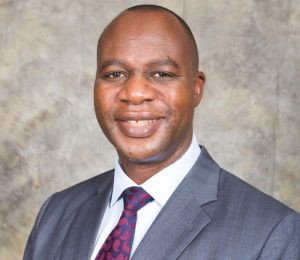
ON July 18 2016, the Deposit Protection Corporation (DPC) announced that the deposit protection cover limit had been increased from $500 to a maximum of $1 000 per depositor per member bank with effect from June 1 2016. In this instalment, NewsDay financial columnist Omen Nyevero Muza (ONM) speaks to DPC chief executive officer John Mafungei Chikura (JMC) about the basis and implications of this development, which comes at a time public confidence in the banking sector is probably at its lowest ebb since dollarisation.
ONM: The deposit protection cover limit has just been increased from $500 to a maximum of $1 000. From the DPC’s viewpoint, what will be the immediate impact of this development?
JMC: The increase in the amount depositors are guaranteed to receive in the event of a bank failure will go a long way in enhancing depositor confidence in the financial system and contribute to the stability of the banking system. The new cover limit will ensure 93% of depositors by number of accounts are covered in full. This means in the event of a bank closure, the majority of depositors are guaranteed to be paid off within a few weeks after a bank has been closed — the full balance in their account at the time of bank closure — without having to wait for the liquidation process.
ONM: The upward revision is effected in terms of Section 41(1) of the Deposit Protection Act [Chapter 24:30]. For the layman depositor, could you briefly outline what Section 41(1) says?
JMC: The provision in the Act simply empowers Deposit Protection Corporation to review and prescribe the deposit protection cover limit from time to time having regard to the capacity of the Fund.
ONM: The import of this development is that in the event of a bank failure, every client with a deposit balance equal to or below $1 000 is now guaranteed to receive full compensation of the amount in the bank account at the time of the bank closure, which is well and good. However, how long can affected depositors expect to wait to get this $1 000?
JMC: As soon as a bank is closed, within a few weeks DPC will commence payments to depositors once duly completed claim forms have been submitted. Speed and efficiency is what the corporation strives for in order to give depositors prompt access to their deposits and a memorable pay-out experience.
ONM: OK, so is the amount of $1 000 what the DPC set out to achieve?
- Chamisa under fire over US$120K donation
- Mavhunga puts DeMbare into Chibuku quarterfinals
- Pension funds bet on Cabora Bassa oilfields
- Councils defy govt fire tender directive
Keep Reading
JMC: The new cover limit allows DPC to cover 93% of depositors by number of accounts in full. This fulfils the Corporation’s Public-Policy Objective of ensuring at least 90% of depositors are compensated in full. This is also in line with international best practice as recommended by the International Association of Deposit Insurers (IADI) — which DPC is affiliated to. The Corporation will continue to review the cover limit in line with the capacity of the Fund so as to ensure depositors continue to enjoy free deposit insurance.
ONM: What was the basis of the cut-off date of June 1, 2016? How would you respond to depositors of all banking institutions closed prior to June 1, 2016 who may feel entitled to the new cover limit, especially considering how slow resolution of failed banks has been in some instances?
JMC: The new cover limit of $1 000 is in line with the capacity of the Fund to meet future obligations. Therefore, the cover limit cannot be implemented in retrospect.
ONM: Based on the DPC’s experiences in resolving failed banks, generally how long has it been taking for depositors to get outstanding balances above the cover limit, which are payable through the liquidation process on a pro-rata basis?
JMC: Liquidation of failed banks has in the past taken longer than usual due to challenges with the problem-bank resolution framework which militated against the attainment of finality and speedy resolution of failed banks. For instance, litigation by former shareholders of closed banks and court processes would take long to be concluded before DPC is appointed the final liquidator. The liquidity challenges obtaining in the market have also resulted in the disposal of closed bank’s assets taking longer than usual and coupled with the slow pace of loan recoveries, this has resulted in the liquidation of some banks taking more than a year before depositors with outstanding balances receive dividends from the liquidation process.











